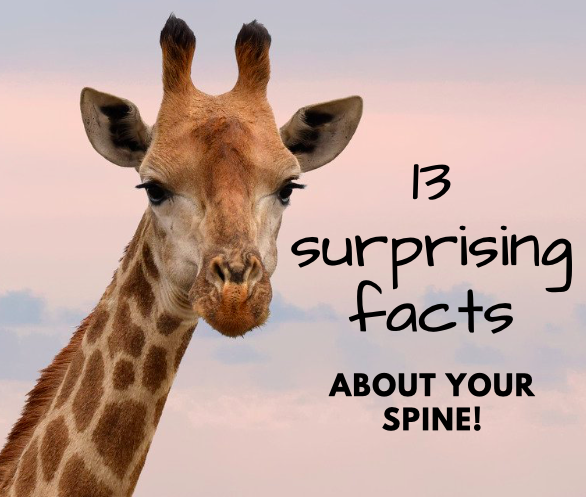Welcome to Facts Vibes! Dive into the fascinating world of the vertebral column with us. Uncover surprising facts about this crucial part of the human body and gain a deeper understanding of its role in maintaining posture and supporting movement. Let’s explore the spine together!
Exploring the Fascinating Facts about the Vertebral Column
The vertebral column, also known as the backbone or spine, is a crucial part of the human body’s skeletal system. Comprised of 33 vertebrae stacked on top of one another, it serves as the central support structure for the entire body. The vertebral column not only provides structural support but also houses and protects the delicate spinal cord, which is vital for transmitting messages between the brain and the rest of the body.
One fascinating fact about the vertebral column is its remarkable flexibility. Each individual vertebra is separated by intervertebral discs made of tough cartilage, allowing for a wide range of movement. This flexibility enables humans to bend, twist, and perform various physical activities.
Furthermore, the vertebral column plays a crucial role in maintaining posture and balance. It supports the weight of the body and helps distribute the forces generated during everyday movements. Without a properly functioning spine, simple activities such as standing and walking would be impossible.
The vertebral column is also an intricate network of nerves and blood vessels, contributing to its importance in the overall function of the body. In addition, it acts as a protective shield for the delicate spinal cord, shielding it from potential injury.
In conclusion, the vertebral column is a truly remarkable structure that plays a fundamental role in the human body’s function and well-being. Its flexibility, support, and protective capabilities make it an essential component of our anatomical design.
Most popular facts
The vertebral column, also known as the spinal column or backbone, is made up of 33 individual bones called vertebrae.
The vertebral column, also known as the spinal column or backbone, is made up of 33 individual bones called vertebrae.
It is divided into five regions: cervical, thoracic, lumbar, sacral, and coccygeal.
The spinal column is divided into five regions: cervical, thoracic, lumbar, sacral, and coccygeal.
The vertebral column provides support and protection for the spinal cord.
The vertebral column provides support and protection for the spinal cord.
The cervical region consists of 7 vertebrae and supports the head and neck.
The cervical region consists of 7 vertebrae and supports the head and neck.
The thoracic region includes 12 vertebrae and anchors the ribs.
The thoracic region includes 12 vertebrae and anchors the ribs.
The lumbar region is made up of 5 vertebrae and provides lower back support.
The lumbar region is comprised of 5 vertebrae and offers lower back support.
The sacral region contains 5 fused vertebrae that form the sacrum, which connects the spine to the pelvic girdle.
The sacral region contains 5 fused vertebrae that form the sacrum, which connects the spine to the pelvic girdle.
The coccygeal region consists of 4 fused vertebrae, forming the coccyx or tailbone.
The coccygeal region consists of 4 fused vertebrae, forming the coccyx or tailbone.
Intervertebral discs, located between each vertebra, act as shock absorbers and allow for movement of the spine.
Intervertebral discs, located between each vertebra, act as shock absorbers and allow for movement of the spine.
The vertebral column allows for various types of movement, including flexion, extension, rotation, and lateral bending.
The vertebral column allows for various types of movement, including flexion, extension, rotation, and lateral bending.
The vertebral column has natural curves that help distribute body weight and maintain balance.
The vertebral column has natural curves that help distribute body weight and maintain balance.
Injuries to the vertebral column can result in spinal cord damage, leading to paralysis or loss of sensation.
Injuries to the vertebral column can result in spinal cord damage, leading to paralysis or loss of sensation.
The vertebrae are connected by ligaments and muscles, providing stability and allowing for movement.
The vertebrae are connected by ligaments and muscles, providing stability and allowing for movement.
The vertebral column plays a crucial role in posture and overall body alignment.
The vertebral column plays a crucial role in posture and overall body alignment.
Maintaining a healthy vertebral column through proper posture, exercise, and regular medical check-ups is essential for overall well-being.
Maintaining a healthy vertebral column through proper posture, exercise, and regular medical check-ups is essential for overall well-being.
In conclusion, the vertebral column is a vital component of the human body, providing support, protection, and flexibility. Understanding these facts about the vertebral column is crucial for maintaining proper posture, preventing injuries, and overall spinal health.
